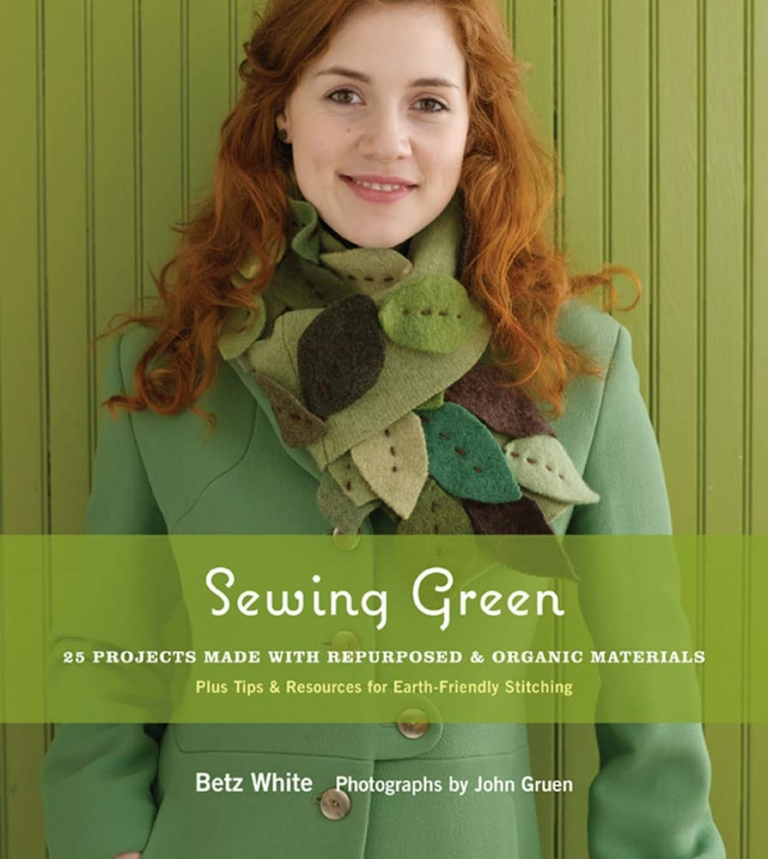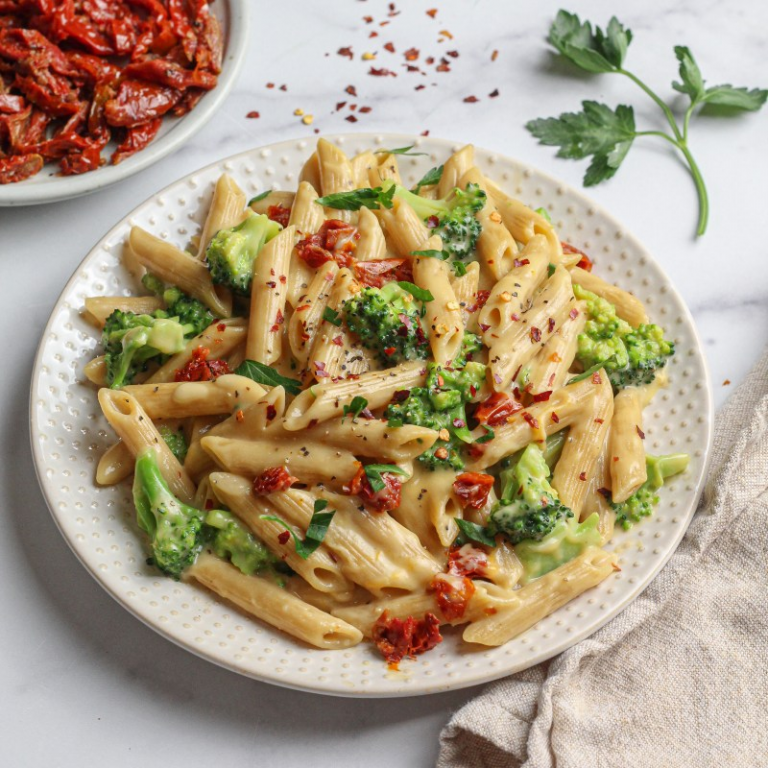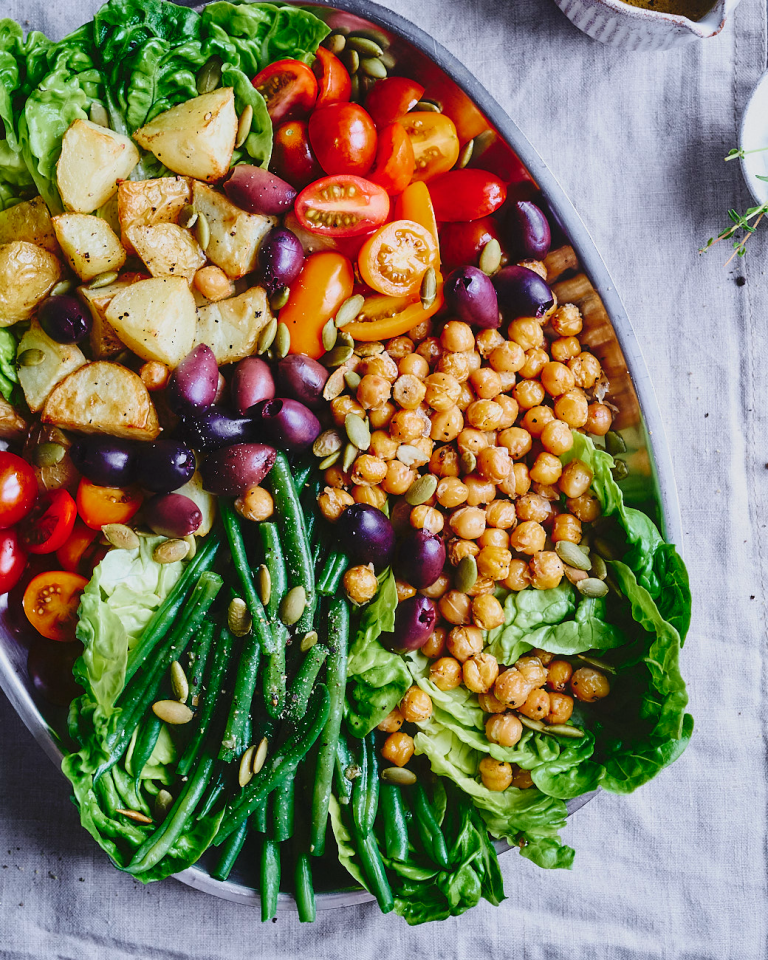
Bare Kind Bamboo Socks use profits to help animal charities.
Nearly everyone wears socks (in England, people even wear socks with vegan sandals!) Socks are good to prevent blisters, and make shoes more comfortable.
It’s rare to find 100% natural socks, because most contain a little elastane (synthetic fibre) for comfort, even if made from cotton or hemp.
Keep socks away from pets. They smell lovely to animal friends, but could cause constipation, choking or intestinal blockage.
Signs of sock ingestion are lethargy, vomiting, loss of appetite, a tender abdomen and difficulty pooping.
What is Elastane?
Whenever you are searching for socks, underwear or even yoga clothing, you’ll almost certainly find that items contain a little elastane (Lycra is the same thing, it’s just a licensed brand name from DuPont).
Elastane is a completely synthetic oil-based material, invented during the Second World War to coat Nazi planes. It’s now used worldwide as a replacement to rubber in both industry and now clothing.
Like all synthetic fibres, elastane releases microplastics when laundered, which go from your washing machine (or sink) out to sea, where they could be ingested by marine creatures.
As you’ll find that nearly all socks contain a little elastane, here are a few tips to release less microplastics, when laundering.
- Wash at 40 degrees or lower (not for babies or weak immune systems – wash at 60 degrees).
- Avoid bleach and fabric conditioner.
- Don’t tumble dry or iron.
- Invest in a microfibre filter. This attaches to your washing machine, and the caught microplastics are returned for recycling, and you receive a new empty cartridge. This works for all synthetic fibres (including washable nappies and sanitary pads).
Look for Natural Dyes
Many socks have bright patterns, so also look at what kind of dyes are used. Many clothing dyes pollute rivers and harm wildlife.
In India, street dogs have literally turned blue, from drinking water near factories that dye denim jeans, for western consumers.
100% Natural Cotton Socks
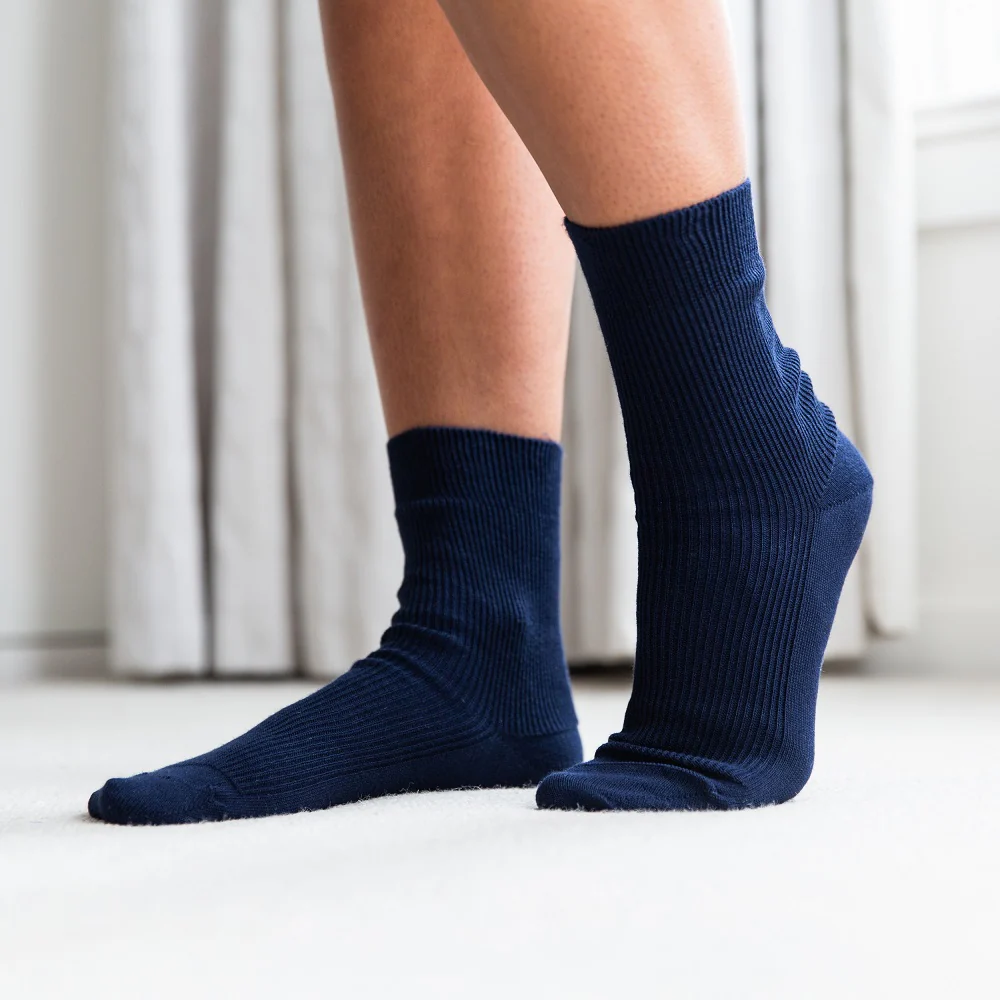
EcoOutfitters is a company that makes organic school uniforms, but it also offers 100% organic cotton socks for children and adults. These offer a pressure-free fit that won’t dig in or leave marks around your ankles, as they are free from elastic (so no elastane).
The sock sizes are even marked on the soles, for easy sorting after laundering. Made ethically in Portugal, these are made from GOTS-certified organic cotton, with soft fine rib and flat seams, for extra comfort.
Eczema Clothing makes a small range of 100% organic cotton socks (also for men). These have soft ribs for relief from itchy skin (note a few of their socks do contain a little elastane).
The following brands all contain a little elastane, but it’s the best we can find so far. Unless buying 100% natural socks, follow advice above (use a microfibre filter, when laundering).
Bamboo Socks That Donate to Animal Charities
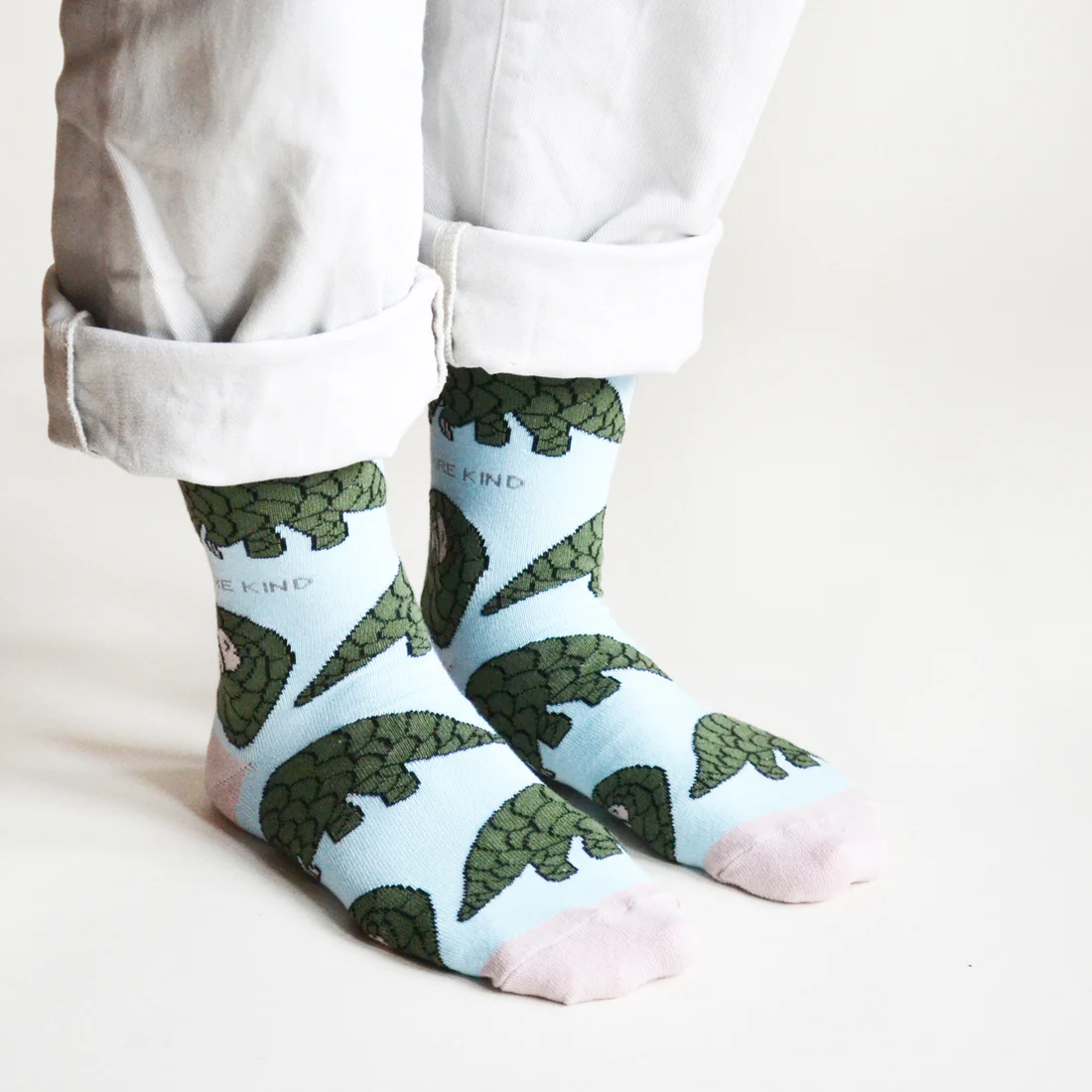
Bare Kind offers a range of illustrated bamboo socks for adults and children. And 10% of profits from each pair, go to protect the animals (from barnyard friends to endangered species) on your socks.
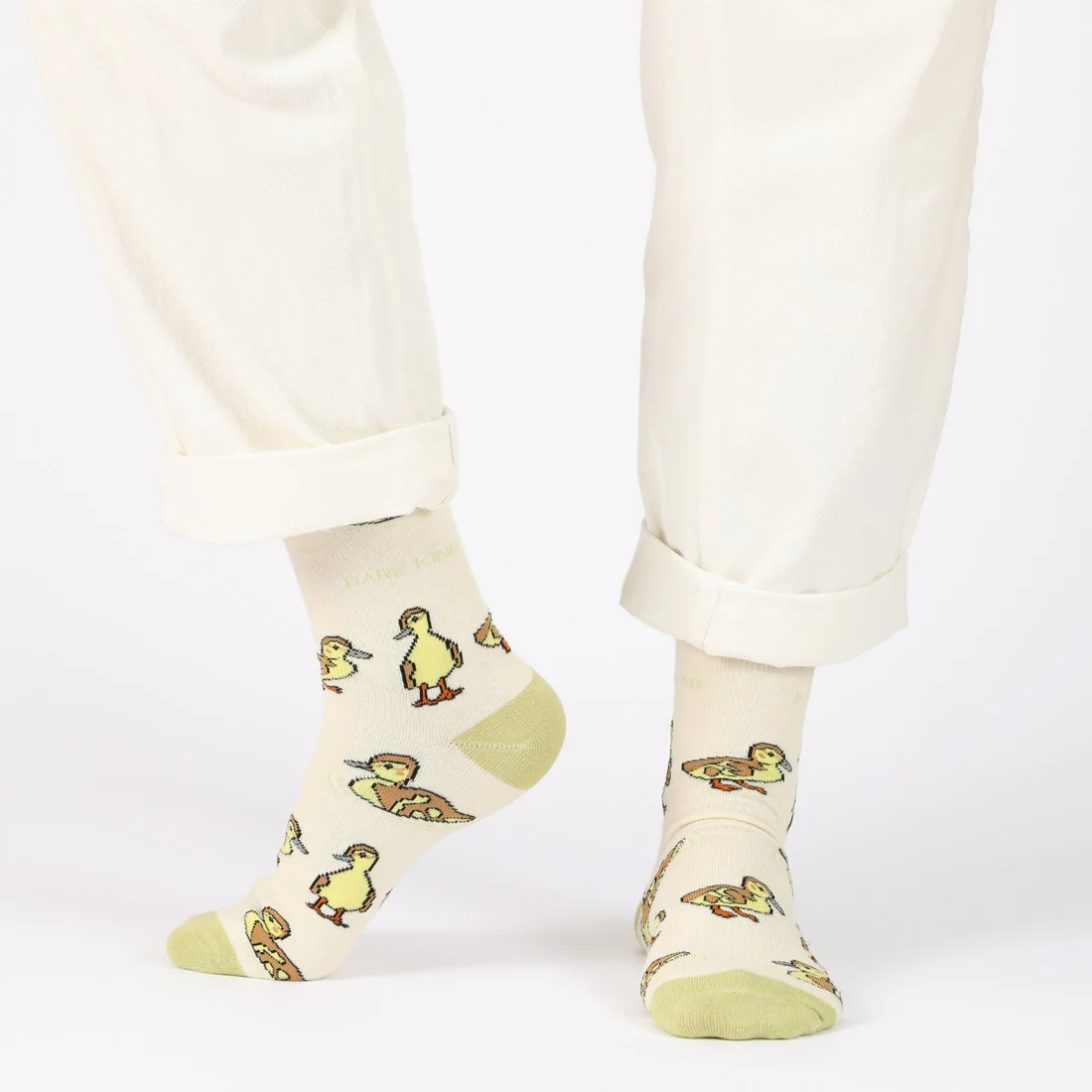
There are colourful socks to save hedgehogs to ducks, Highland cows to pangolins. Everything is also sent in plastic-free packaging.
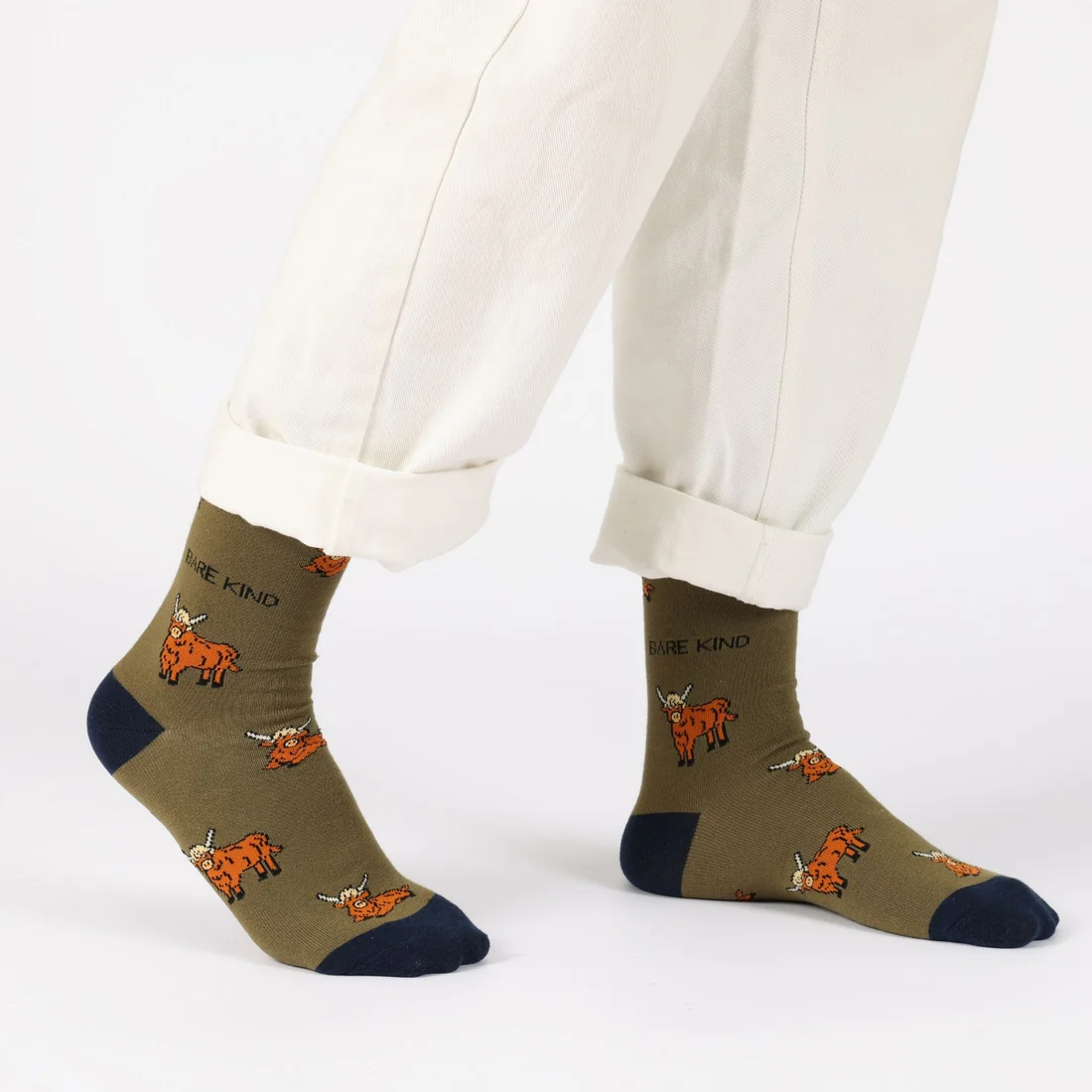
Bamboo is the world’s fastest-growing grass. It’s not locally-grown, but it’s very sustainable as it grows so fast. Industrial bamboo is not the same as fresh shoots, eaten by pandas.
Recycled Yarn Socks (Leicestershire)
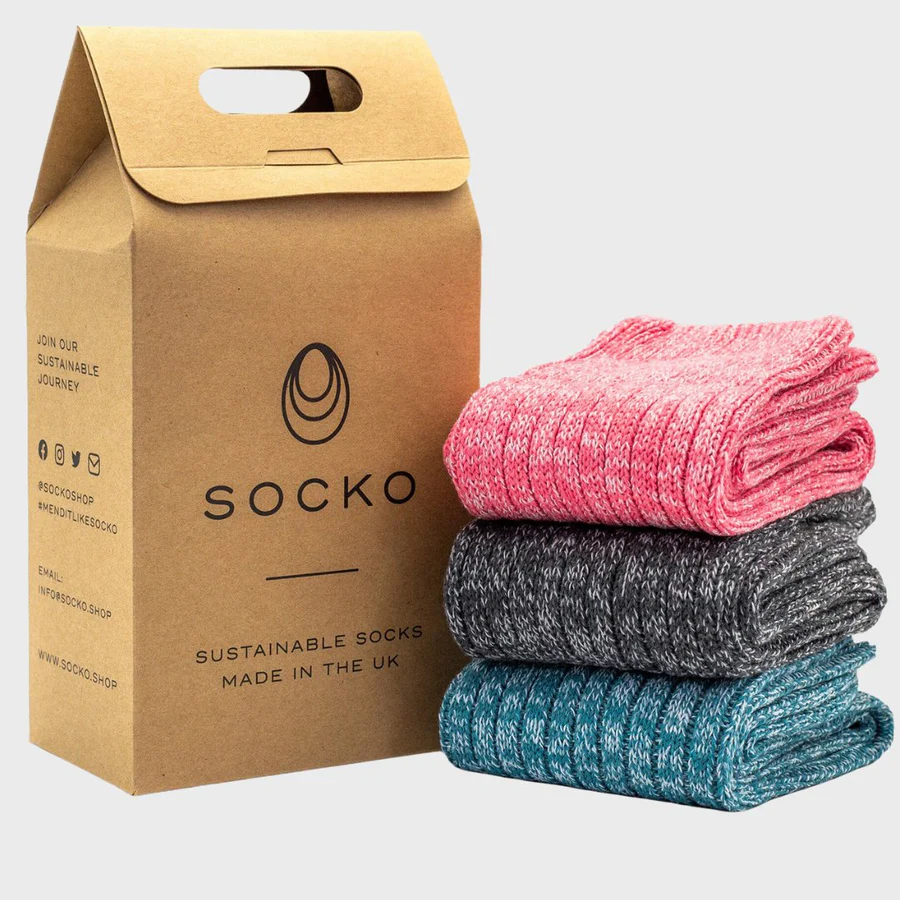
Socko is a Leicestershire brand that blends recycled cotton with a few synthetics (including recycled fishing waste).
But at least these are made from end-of-line yarns. Each pair includes instructions (with colour-matched yarn) on how to darn socks in 10 minutes, to help stop the thousands of pairs of socks thrown away.
Sold in grey, pink or blue, you can buy separate or mixed sets (in cardboard packaging). These socks feature reinforced heels and toes, and are hand-finished and inspected for quality.
Affordable (mostly) Organic Cotton Socks
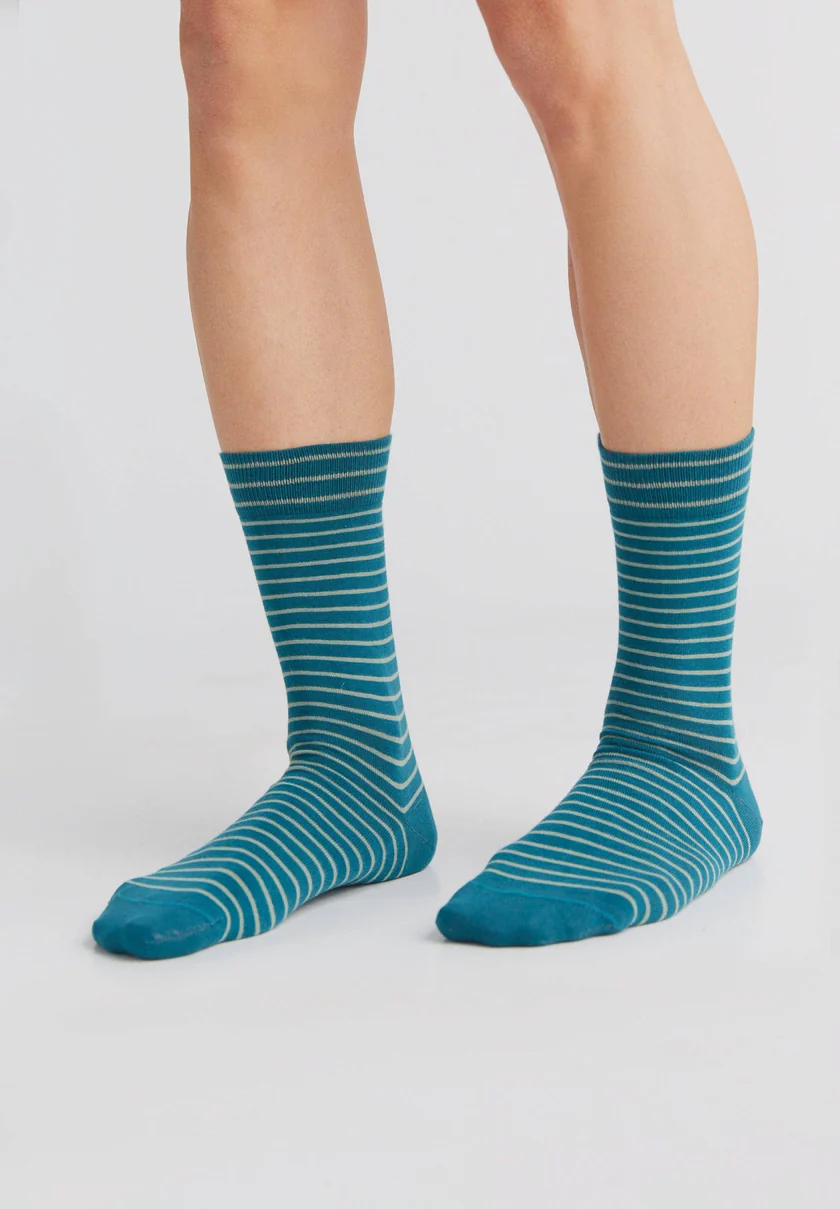
Earth Wardrobe (a Scottish brand that specialises in affordable organic clothing basics like t-shirts) offers a line of socks. Mostly made with organic cotton (a few are wool, so not vegan-friendly).
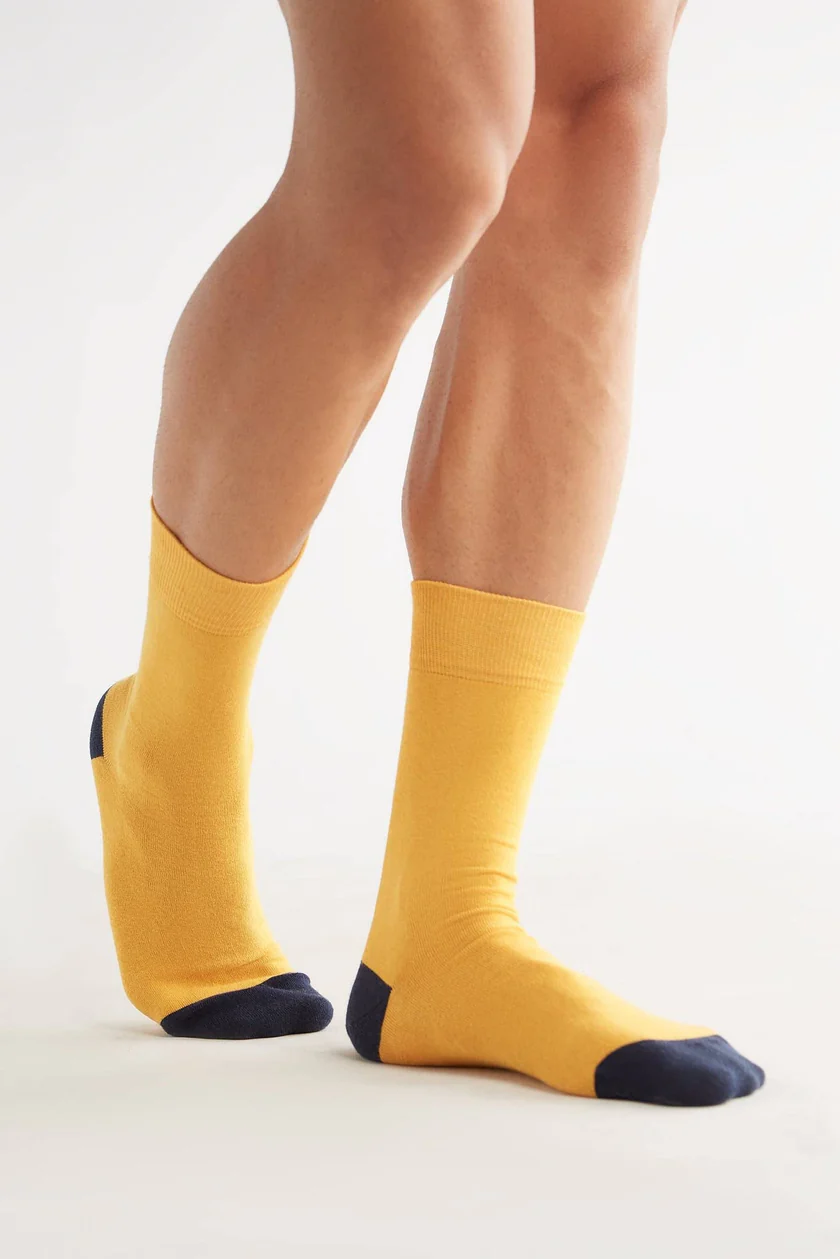
The range is extensive. There are socks for normal wear, plus trainer socks, sock liners and even socks for work boots.
How to Make Your Socks Last Longer
Once you’ve invested in a few pairs of quality socks, here are some useful tips to help them last longer.
- Be gentle when putting socks on and off, and keep toenails trimmed.
- Store socks flat (don’t ‘cuff them into one another’).
- Launder with a gentle unscented detergent. Never use fabric conditioner or bleach, and don’t tumble-dry your socks. Unless you have to launder on high temperatures for immunity (babies, medical issues etc), wash in cold or lukewarm water.
- Wear with well-fitted quality vegan shoes or sneakers. Visit a shoe shop before buying, to get your feet measured, as too-tight shoes will end up destroying your socks.
Where to Recycle Used Socks
Natural fibre socks can be recycled at textile banks. Due to most socks containing elastane, they can’t really be recycled.
You could collectively (community, office, school) invest in a one-off TerraCycle Fabric & Clothing Box. Fill with all your socks, fabrics, textiles and hosiery and send it off (using the prepaid) label to recycle into other things.
A Comfy Alternative to Wearing Socks

Dr Scholl’s Go Sockless are cushioning insoles, to wear inside your shoes. They are not ‘natural’ (made from synthetic terry cloth), but are replaced every six months (rather than laundered) so at least it stops microplastics leaching from machines.

Sold in a pack of 3, you just peel them apart and place inside shoes to absorb moisture, the cooling vents help to keep feet dry, and the thin profile is designed to not crowd toes, in shoes. Trim to size.

